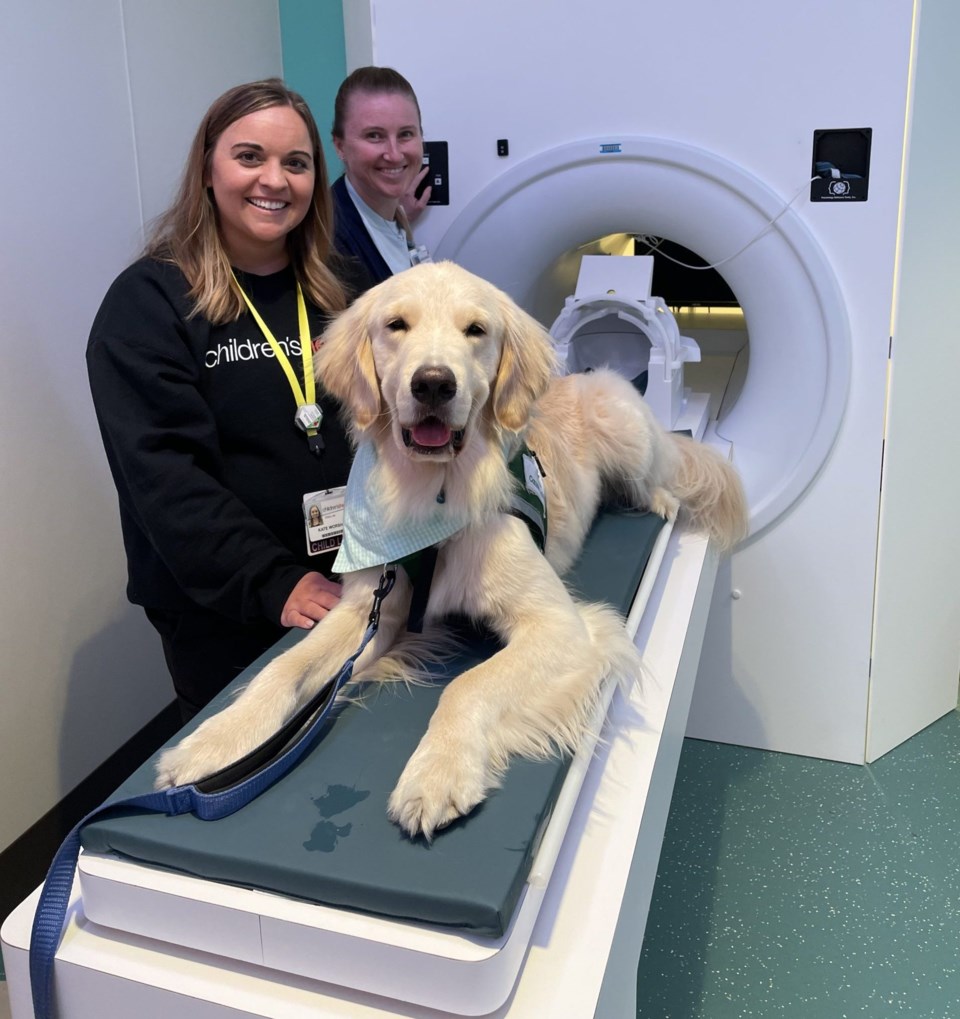Children often find MRI scans to be frightening, necessitating the use of sedation or general anesthesia to minimize their movement and alleviate their fears in unsettling and confined environments. But, anesthesia comes with certain drawbacks such as extended recovery periods, radiation exposure and post-treatment side effects like nausea and confusion.
Children's Health introduced the Kids Can program in early 2019 to address these concerns. This initiative incorporates interactive activities and patient education to reduce the reliance on anesthesia and shorten the duration of procedures. One aspect of the program is the inclusion of a simulated MRI experience, allowing children to familiarize themselves with the sounds, visuals and vibrations they would encounter during an actual MRI.
“The big difference is the mock MRI is not a magnet (radiation) and therefore there are no issues with having more people in the room and it is safe for all,” Children’s Health Pediatric Radiologist and Professor at UT Southwestern Dr. Timothy Booth told Local Profile. “The great thing is it looks and sounds like the real thing, so the child and parents can become accustomed to the environment and allow for increased success when getting a real MRI.”
Ave, a fourteen-year-old girl, started using the mock MRI machine earlier this year following her diagnosis of hydrocephalus, a condition characterized by an accumulation of fluid in the brain. The mock MRI played a crucial role in helping Ave address her sensory challenges, as she requires actual MRI scans to monitor her brain activity for potential bleeding or tumors. Because of her experience with the mock MRI, Ave can undergo real MRI scans without the need for sedation successfully.
But the mock MRI isn’t the only thing helping kids face their fears.
“With the help of our service dogs, our Child Life Specialists promote a friendly and welcoming environment in the mock MRI room for children practicing their scans,” Dr. Booth told Local Profile. “Seeing our service dogs on the scan helps lessen the intimidation around the mock MRI.” Barbies and other dolls are also placed inside the MRI to show kids the machine is safe.
As a result of the program’s success, Children’s Health saw a 50% increase in MRIs performed without the need for anesthesia.




